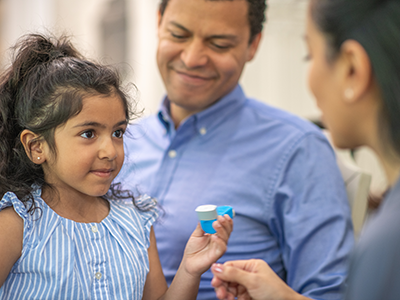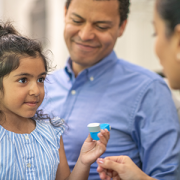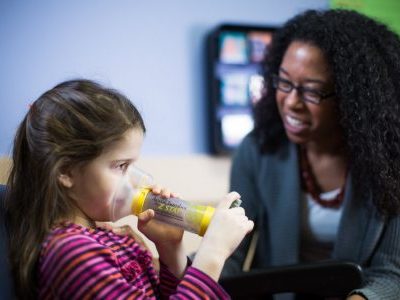Caregiver language preference is associated with asthma outcomes

A team of researchers found that language barriers can contribute to increased asthma-related healthcare utilization including emergency department (ED) visits, hospitalizations and intensive care unit (ICU) visits.
Asthma is one of the most common chronic pediatric diseases, affecting more than 4 million children and accounting for approximately 24% of pediatric hospitalizations nationwide. Asthma disproportionally impacts historically marginalized racial and ethnic minorities in the United States, with these populations experiencing increased unscheduled asthma-related healthcare utilization and worse asthma outcomes. Families that speak languages other than English can experience increased patient safety events and worse outcomes in other disease processes, but limited data exists on the role of caregiver language preference on asthma morbidity.
The big picture
In a study published in Pediatrics, a team of researchers found that language barriers can contribute to increased asthma-related healthcare utilization including emergency department (ED) visits, hospitalizations and intensive care unit (ICU) visits.
“Families who speak languages other than English can experience significant barriers to quality healthcare from how they navigate a complex healthcare system to how they are able to communicate with their healthcare providers and receive timely care,” said Mickey Emmanuel, M.D., a pediatric emergency medicine fellow at Children’s National Hospital and lead author of the study. “Understanding how caregiver language preference contributes to pediatric asthma outcomes is crucial.”
What’s been the hold up in the field?
Prior research has characterized that caregivers with non-English language preference or NELP were less likely to receive education on asthma disease management and to be given asthma action plans in their preferred language or use asthma action plans. To date, limited data exists on the role of caregiver language preference on asthma utilization.
“Future studies utilizing qualitative and quality improvement methodology that puts the family’s needs at the center are key,” says Dr. Emmanuel. “Efforts to reduce asthma-related ED visits and hospitalizations for families who speak languages other than English must focus on understanding the unique barriers that caregivers face in caring for their children with asthma, and on delivering linguistically competent asthma care in the ambulatory and hospital settings.”
What’s next?
“This work has allowed us to identify that caregiver language preference is an important determinant for asthma outcomes and will hopefully fuel additional research focused on improving care for this population,” says Dr. Emmanuel.
From here, Children’s National will continue to work with notable mentors and leaders in the Language Equity space, with a clear commitment toward improving care for this population of patients.
Additional Children’s National researchers include: Rachel Margolis, Ph.D., Ranjodh Badh, B.A., Nikita Kachroo, A.E.-C., Stephen J. Teach, M.D., MPH, and Kavita Parikh, M.D., MSHS.







